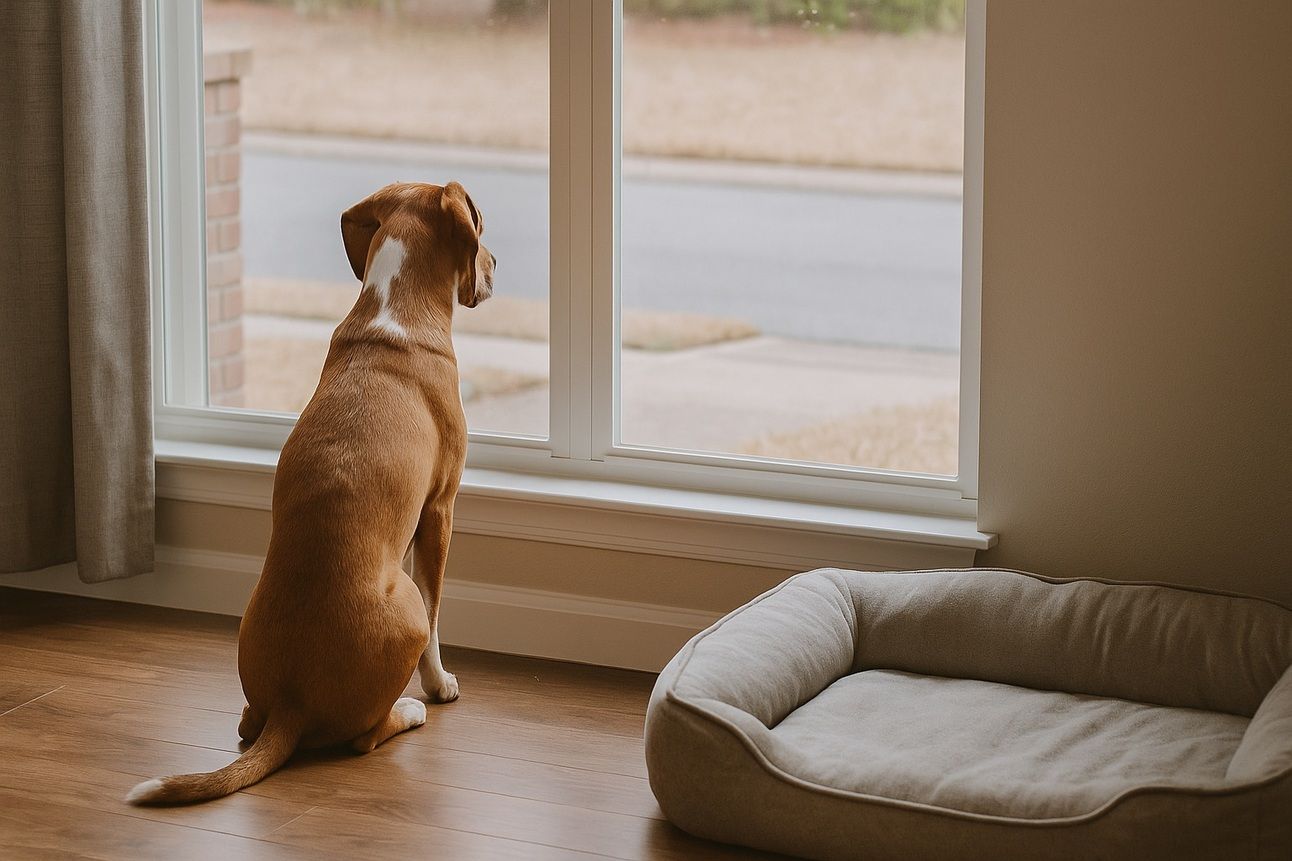- Beorn’s Bark Bus News
- Posts
- How Long Is Too Long? The Truth About Leaving Dogs Home Alone
How Long Is Too Long? The Truth About Leaving Dogs Home Alone

You’ve fed your dog, taken them for a quick potty break, and now you’re off to work for the next 8–10 hours. They’ll be fine, right? They have water, a soft bed, and a toy or two. What more could they need?
The truth is: dogs are not built for isolation — not physically, emotionally, or socially. While most dogs can be left alone for a workday, the reality of how long is too long is more complex than a single number. It depends on age, breed, temperament, routine, and enrichment.
Let’s break it down — and help you figure out what’s truly best for your dog when you’re not home.
Dogs evolved alongside humans. They’re pack animals, biologically wired to be part of a group. Left alone for extended periods, even the most independent dog can experience:
Loneliness and boredom
Increased anxiety or frustration
Lack of mental or physical stimulation
Unmet potty needs
Behavioral changes over time (destruction, barking, depression)
Just because a dog tolerates being left alone doesn’t mean they’re thriving during that time.
How Long Is Too Long?
🐾 Puppies (8 weeks to 6 months)
Alone time limit: 2–4 hours
Puppies need frequent potty breaks, feeding, and socialization. Long isolation can lead to accidents, anxiety, and missed developmental milestones. A midday visit is non-negotiable.
🐾 Adult Dogs (1–7 years)
Alone time limit: 6–8 hours (max)
Healthy adult dogs can often manage a full workday — if they’ve had proper morning exercise, a potty break, and mental stimulation. But day after day of solo time with no enrichment can lead to slow-building problems.
🐾 Senior Dogs (7+ years)
Alone time limit: 4–6 hours
Older dogs may need more bathroom breaks, medication, or support for cognitive decline. They may become more anxious with age or need additional comfort throughout the day.
Breed and Personality Matter
Some breeds are naturally more chill and independent (think Basset Hounds, Greyhounds), while others crave stimulation and connection (like Border Collies or Labradors). That said, even low-energy breeds can become bored or anxious without the right routine.
Clingy or anxious dogs may develop:
Separation anxiety
Excessive barking or destruction
Pacing, drooling, or self-harm
High-energy dogs may suffer from:
Pent-up frustration
Hyperactivity at night
Increased risk of behavior issues
Signs Your Dog Is Alone Too Long
You may not be home to witness it, but your dog’s behavior can clue you in:
Accidents, even though they’re house-trained
Destruction (chewed furniture, scratched doors)
Vocalization (your neighbors might know before you do)
Overexcitement when you return (not just happy — frantic)
Lethargy or withdrawn behavior
A home camera or pet monitoring system can reveal a lot.
Solutions to Break Up the Day
You may not be able to change your job — but you can change your dog’s experience.
✅ Hire a Midday Dog Walker or Drop-In
Even a 30-minute visit can provide relief, stimulation, and comfort.
✅ Enroll in a Dog Adventure Service or Day Outing
Structured social outings offer more than relief — they offer joy, exercise, and engagement. (Sound familiar?)
✅ Rotate Enrichment Toys
Puzzle feeders, frozen Kongs, and treat balls can turn alone time into brain time. Rotate them to keep things novel.
✅ Use Pet Cameras
Some let you drop treats or speak to your dog. It’s no substitute for presence, but it can offer reassurance — for both of you.
✅ Create a “Goodbye” Routine
Predictability helps dogs feel safe. Offer a special treat only when you leave, and don’t make a big fuss about departures or arrivals.
But What About Crating?
Crating adds another layer of confinement — so timing becomes even more critical. No dog should be crated for an entire workday without breaks. If crate time is necessary, pair it with structured freedom, enrichment, and exercise when you are home.
Crating ≠ babysitting. It’s a tool, not a solution.
The Takeaway
Every dog is different — but no dog should be expected to thrive in solitude. Left alone too long, dogs don’t just get bored — they suffer emotionally, physically, and behaviorally.
Instead of asking, “Can my dog be alone for 8 hours?” — a better question is:
“How can I make those 8 hours better for them?”
Whether that’s a dog walker, a friend, a midday adventure, or a new enrichment routine — the goal isn’t just keeping your dog safe while you’re gone. It’s helping them live a life that’s full, balanced, and emotionally secure.
Because being your dog’s person doesn’t end when you walk out the door.